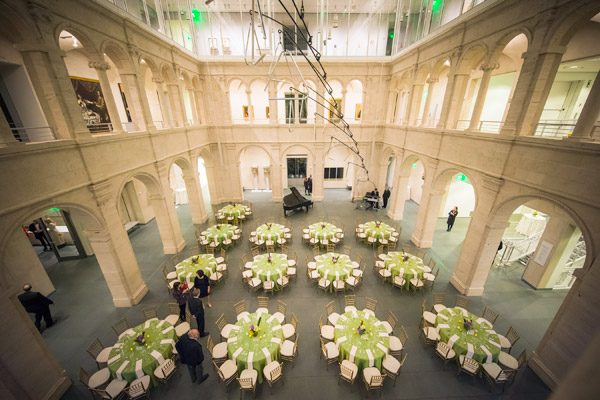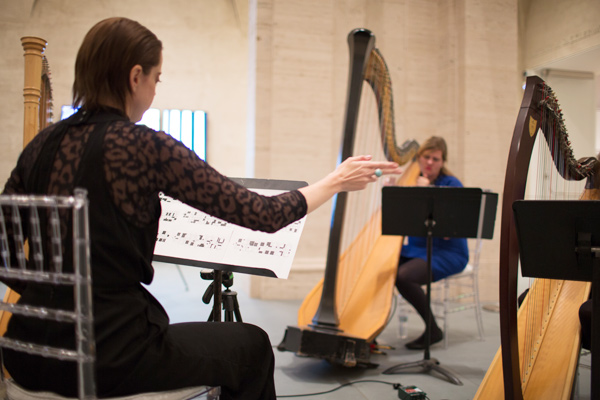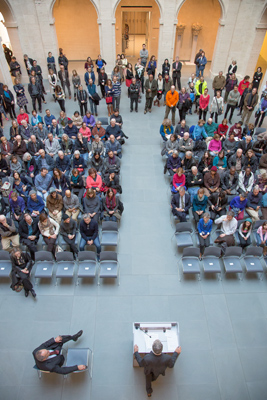The Calderwood Courtyard has hardly seen a dull moment since the new Harvard Art Museums opened in 2014. The historic setting that architect Renzo Piano renovated and recast as a vibrant piazza has more than lived up to the hope that it would be a community space for countless gatherings and special events. From casual coffee dates at Jenny’s Cafe, to musical performances, to weddings, to student-led tours, the courtyard is constantly abuzz.
Performance Hall
Filled with natural light and offering excellent vantage points from all four sides, the courtyard makes an ideal backdrop to events of all types. Choreographer Karole Armitage recently took advantage of this versatility with a dance staged in celebration of the special exhibition Everywhen: The Eternal Present in Indigenous Art from Australia. Harvard student dancers, as well as performers from Armitage’s dance company, used the entire space, including the areas beneath the travertine arches. “It requires a certain amount of thinking to make [the dance] articulate from all angles,” Armitage said, but she welcomed the challenge.
Music is equally at home here. Concerts by students and other community members, showcasing everything from classical music to opera to jazz, have dazzled audiences in part because of the building’s unique acoustics. Spoken-word performances, such as a pop-up poetry reading guided last fall by poet Eileen Myles, have also been well received in the courtyard.
Public Space for Art
Amid these special events and the everyday hustle and bustle, works of art have a prominent place in the courtyard. As part of the museums’ Art in Public Spaces initiative, a number of works are visible in and around the courtyard, which is always free and open to public. These works include the 556-pound steel mobile hanging over the courtyard, Carlos Amorales’s Triangle Constellation (2015). The commissioned work of musical triangles of various sizes was installed last spring and will remain suspended under the building’s glass roof indefinitely.
Other highlights include eight of the museums’ popular medieval capitals. These stone works, each weighing about 1,000 pounds, are arranged along all four walls of the courtyard, beneath the arches. And two contemporary art installations—Ai Weiwei’s 258 Fake (2011) and Rebecca Horn’s site-specific Flying Books Under Black Rain Painting (2014)—are displayed near the museums’ Prescott Street entrance.
These works are all perfectly positioned to capture the attention and interest of individuals who regularly use the courtyard as a thoroughfare—students and Harvard faculty passing through on the way to or from class, community members who stop by to purchase gifts in the museums shop, and tourists who are simply curious about the building and what it holds.
Art of all types, events of all styles, and visitors of all backgrounds: the Calderwood Courtyard offers not just a welcome but a variety of ways to engage with and experience the museums.






